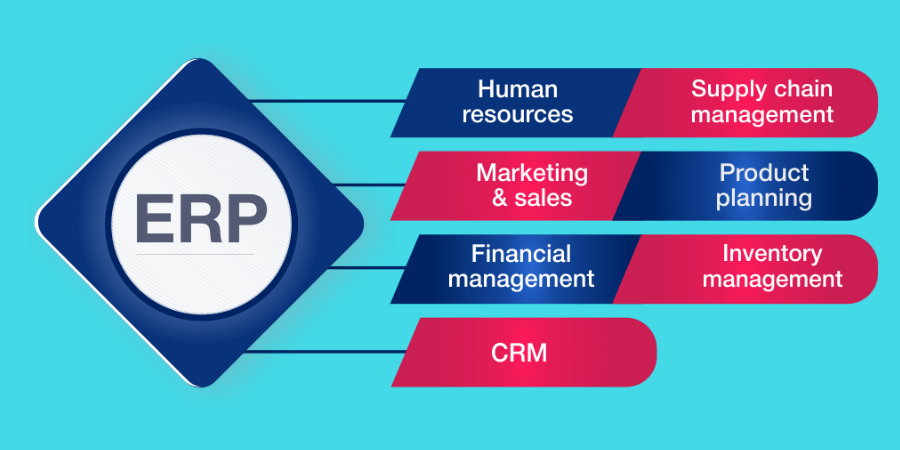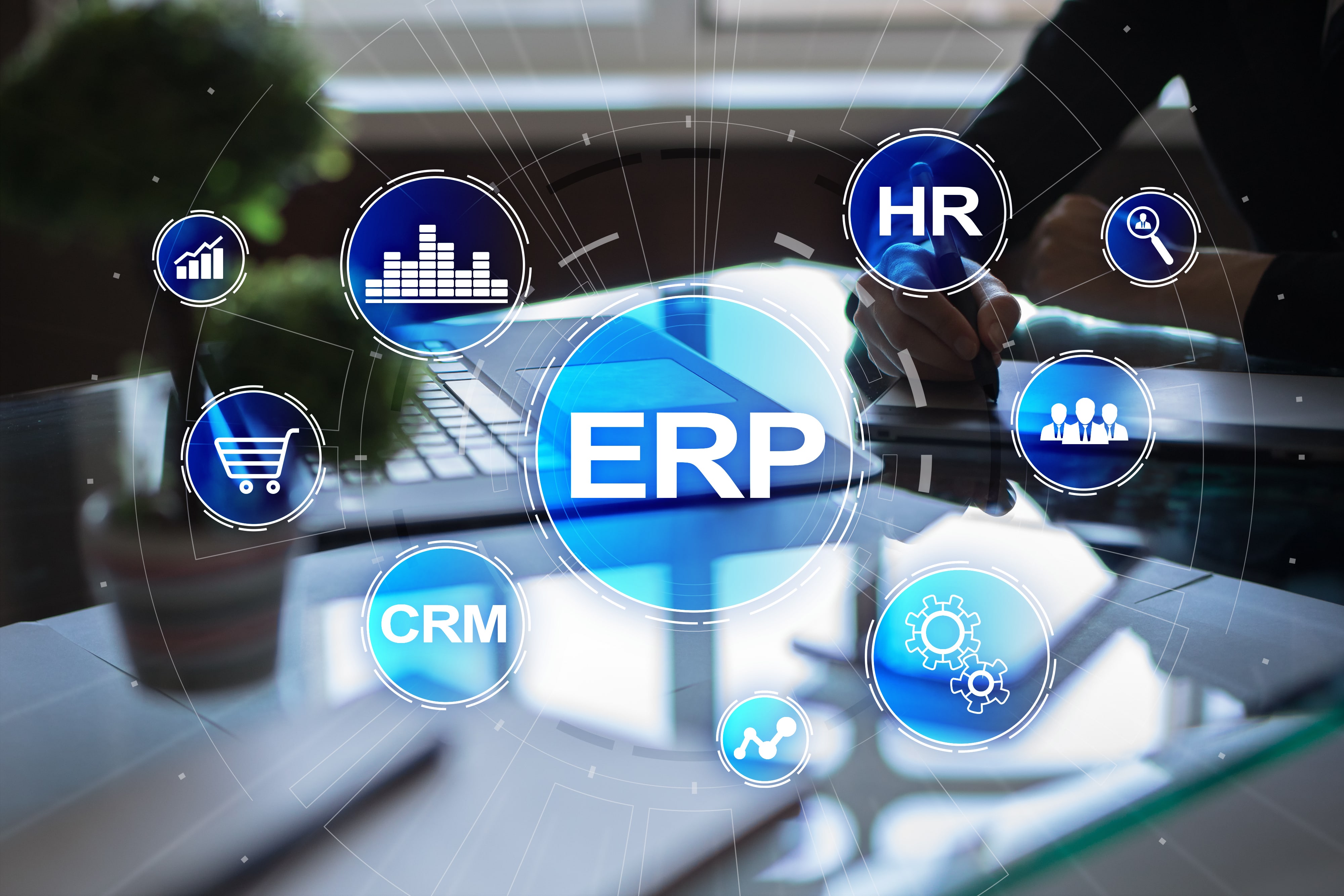ERP Software Development: Unlocking Value and Driving Urgency for Your Business
Introduction
In today’s fast-paced and competitive business landscape, organizations are constantly seeking ways to streamline operations, improve efficiency, and gain a competitive edge. Enterprise Resource Planning (ERP) software has emerged as a powerful tool to address these challenges, offering a comprehensive solution that integrates various aspects of business operations. This blog post delves into the world of ERP software development, showcasing its value propositions and addressing the pain points of ideal customers. We will explore the benefits and drawbacks of ERP software, providing insights into its potential impact on your business. By understanding the urgency of implementing an ERP system, you can unlock the transformative power of this technology and drive your organization towards success.
What is ERP Software?
ERP software is a comprehensive business management system that integrates various functional areas of an organization, such as finance, supply chain management, human resources, and customer relationship management. It provides a centralized platform for managing and accessing real-time data, enabling businesses to streamline processes, improve collaboration, and make informed decisions. By eliminating data silos and automating workflows, ERP software can significantly enhance operational efficiency and productivity.

Key Benefits of ERP Software Development
1. Improved Data Management and Visibility:
ERP software provides a single source of truth for all business data, eliminating data inconsistencies and improving data accuracy. This centralized data repository enables organizations to gain real-time visibility into key performance indicators, allowing for better decision-making and strategic planning.
2. Enhanced Collaboration and Communication:
ERP systems facilitate seamless collaboration among different departments within an organization. By providing a shared platform for information sharing and communication, ERP software breaks down departmental barriers and promotes cross-functional teamwork.
3. Streamlined Business Processes:
ERP software automates many repetitive and manual tasks, such as data entry, order processing, and inventory management. This automation streamlines business processes, reducing errors and improving operational efficiency.
4. Improved Customer Service:
ERP software provides customer-facing teams with a comprehensive view of customer interactions, enabling them to respond quickly to inquiries and resolve issues effectively. This enhanced customer service can lead to increased customer satisfaction and loyalty.
5. Reduced Costs and Improved Profitability:
By optimizing business processes and eliminating inefficiencies, ERP software can significantly reduce operating costs. The automation of tasks, improved data management, and streamlined supply chain management can all contribute to increased profitability.
6. Enhanced Compliance and Risk Management:
ERP software helps organizations comply with industry regulations and standards by providing robust audit trails and security measures. It also enables businesses to identify and mitigate risks proactively, reducing the likelihood of financial losses or reputational damage.
7. Scalability and Adaptability:
ERP software is designed to be scalable and adaptable, allowing organizations to grow and evolve without outgrowing their business management system. It can be customized to meet specific industry and business requirements, ensuring a tailored fit for each organization.

Pain Points of Ideal Customer Persona
1. Data Silos and Lack of Integration:
Many organizations struggle with data silos and a lack of integration between different business systems. This can lead to data inconsistencies, errors, and difficulties in accessing critical information. ERP software addresses this pain point by providing a centralized platform for all business data.
2. Inefficient and Manual Processes:
Repetitive and manual tasks can consume a significant amount of time and resources, hindering operational efficiency. ERP software automates many of these tasks, freeing up employees to focus on more strategic initiatives.
3. Poor Collaboration and Communication:
Lack of collaboration and communication between departments can lead to delays, errors, and missed opportunities. ERP software fosters cross-functional collaboration by providing a shared platform for information sharing and communication.
4. Limited Visibility and Decision-Making:
Without real-time visibility into key performance indicators, businesses may struggle to make informed decisions. ERP software provides a comprehensive view of business data, enabling data-driven decision-making and strategic planning.
5. Compliance and Risk Management Challenges:

Organizations face increasing pressure to comply with industry regulations and standards. ERP software provides robust audit trails and security measures, helping businesses meet compliance requirements and mitigate risks.
6. Lack of Scalability and Adaptability:
As businesses grow and evolve, they may outgrow their existing business management systems. ERP software is designed to be scalable and adaptable, allowing organizations to accommodate growth and changing business needs.
7. High Cost and Complexity:
ERP software implementation can be a significant investment, and some organizations may be concerned about the cost and complexity involved. However, the long-term benefits and return on investment can far outweigh the initial costs.
Advantages and Disadvantages of ERP Software Development
Advantages
1. Improved Data Management and Visibility: ERP software provides a centralized platform for managing and accessing real-time data, enabling businesses to gain a comprehensive view of their operations.
2. Enhanced Collaboration and Communication: ERP systems facilitate seamless collaboration among different departments within an organization, breaking down departmental barriers and promoting cross-functional teamwork.
3. Streamlined Business Processes: ERP software automates many repetitive and manual tasks, such as data entry, order processing, and inventory management, streamlining business processes and improving operational efficiency.
4. Improved Customer Service: ERP software provides customer-facing teams with a comprehensive view of customer interactions, enabling them to respond quickly to inquiries and resolve issues effectively, leading to increased customer satisfaction and loyalty.
5. Reduced Costs and Improved Profitability: By optimizing business processes and eliminating inefficiencies, ERP software can significantly reduce operating costs and improve profitability.
6. Enhanced Compliance and Risk Management: ERP software helps organizations comply with industry regulations and standards by providing robust audit trails and security measures, reducing the likelihood of financial losses or reputational damage.
7. Scalability and Adaptability: ERP software is designed to be scalable and adaptable, allowing organizations to grow and evolve without outgrowing their business management system.
Disadvantages
1. High Cost and Complexity: ERP software implementation can be a significant investment, and some organizations may be concerned about the cost and complexity involved.
2. Implementation Challenges: ERP software implementation can be a complex and time-consuming process, requiring careful planning, execution, and change management.
3. Data Migration and Integration: Migrating data from legacy systems to an ERP system can be a challenging task, requiring careful planning and execution to ensure data integrity and accuracy.
4. User Adoption and Training: Successful ERP implementation requires user adoption and training to ensure that employees are proficient in using the system and can leverage its full potential.
5. Customization and Integration: ERP software may require customization to meet specific industry and business requirements, which can increase the cost and complexity of implementation.
6. Vendor Dependence: Organizations may become dependent on the ERP vendor for ongoing support, maintenance, and upgrades, which can limit flexibility and increase costs.
7. Business Disruption: ERP implementation can disrupt business operations during the transition period, requiring careful planning and communication to minimize the impact on productivity.
Summary
ERP software development offers a comprehensive solution for businesses seeking to streamline operations, improve efficiency, and gain a competitive edge. By providing a centralized platform for managing business data, integrating various functional areas, and automating repetitive tasks, ERP software can significantly enhance data management, collaboration, business processes, customer service, compliance, and scalability. However, it is important to consider the potential disadvantages, such as high cost, implementation challenges, data migration complexities, user adoption issues, customization requirements, vendor dependence, and business disruption. By carefully evaluating the benefits and drawbacks and ensuring a well-planned implementation process, organizations can harness the transformative power of ERP software to drive business success.
Q&A
1. What is the primary benefit of ERP software?
ERP software provides a centralized platform for managing business data, integrating various functional areas, and automating repetitive tasks, leading to improved efficiency, collaboration, and decision-making.
2. What are the key pain points that ERP software addresses?
ERP software addresses pain points such as data silos, inefficient processes, poor collaboration, limited visibility, compliance challenges, scalability limitations, and high costs.
3. How does ERP software improve data management?
ERP software provides a single source of truth for all business data, eliminating data inconsistencies and improving data accuracy, enabling real-time visibility and data-driven decision-making.
4. What are the advantages of ERP software in terms of collaboration?
ERP systems facilitate seamless collaboration among different departments within an organization by providing a shared platform for information sharing and communication, breaking down departmental barriers and promoting cross-functional teamwork.
5. How does ERP software streamline business processes?
ERP software automates many repetitive and manual tasks, such as data entry, order processing, and inventory management, streamlining business processes, reducing errors, and improving operational efficiency.
6. What are the benefits of ERP software for customer service?
ERP software provides customer-facing teams with a comprehensive view of customer interactions, enabling them to respond quickly to inquiries and resolve issues effectively, leading to increased customer satisfaction and loyalty.
7. How does ERP software help reduce costs and improve profitability?
By optimizing business processes and eliminating inefficiencies, ERP software can significantly reduce operating costs, improve resource utilization, and increase profitability.
8. What are the compliance and risk management benefits of ERP software?
ERP software provides robust audit trails and security measures, helping organizations comply with industry regulations and standards, reducing the likelihood of financial losses or reputational damage, and enabling proactive risk management.
9. Is ERP software scalable and adaptable to changing business needs?
ERP software is designed to be scalable and adaptable, allowing organizations to grow and evolve without outgrowing their business management system, accommodating changing business needs and industry trends.
**10
